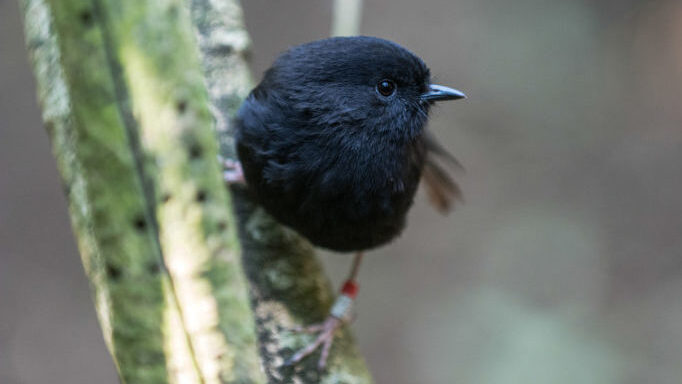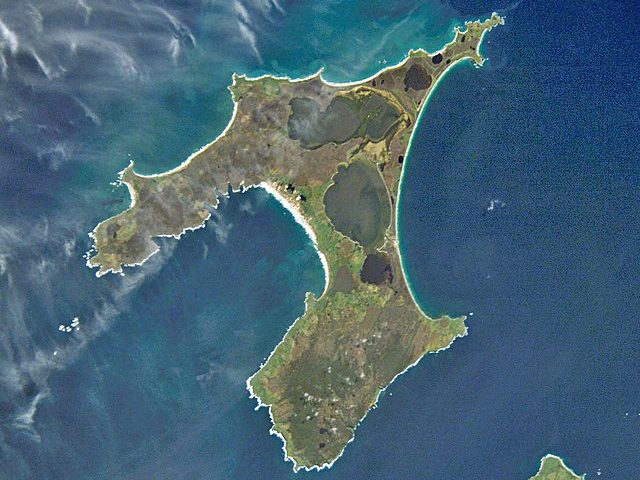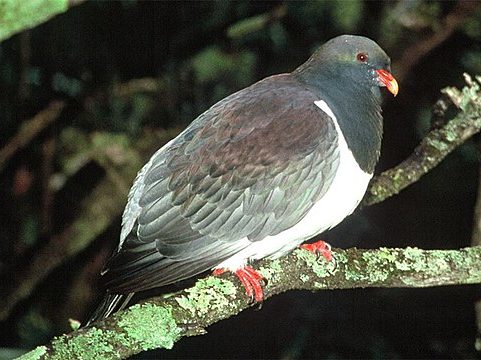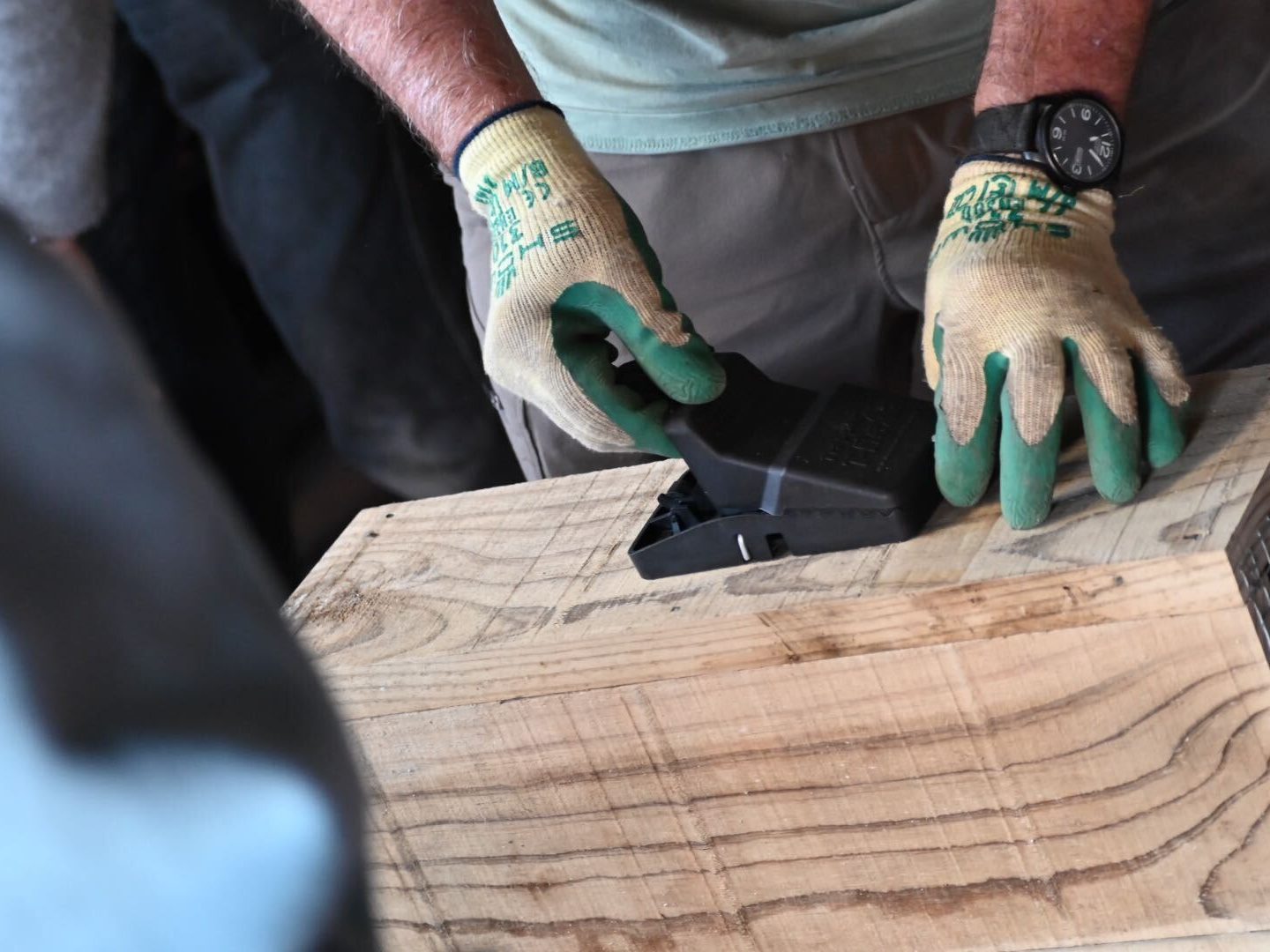Before the arrival of humans, the Chatham Islands were teeming with animal life. Geographically isolated for millions of years, fauna and flora living on the Chathams evolved into unique species found nowhere else in the world.

The human introduction of rats, possums and feral cats has devastated the island’s once-rich biodiversity. But there’s hope for the island. An exciting and ambitious project sits on the horizon: Predator Free Chatham Islands. The project will complement a number of other projects already underway – including backyard trapping and bush restoration initiatives.
So, how will this island come together to achieve its shared goal? We take a look at the work underway now and how a large landscape predator free project will unite these efforts.
A biodiversity hotspot in peril

Hamish Tuanui Chisholm is the Predator Free Co-ordinator for the islands. And he also happens to be a sixth generation Chatham Islander – so his passion for the islands is both professional and personal.
“The Chatham Islands is made up of 11 islands, two of which are habited: Chatham Island (often referred to as main Chatham) and Pitt Island.
“The islands are a biodiversity hotspot. A fifth of New Zealand’s threatened bird species call them home. We have a whole set of endemic species, including kakaruia (Chatham Island black robin), Chatham Island tomtit, Chatham Island tāiko (magenta petrel) and the Forbes’ parakeet.
“Our islands’ once-thriving ecosystem has been severely impacted by introduced predators – rats, possums and feral cats.
“Norway rats have been particularly damaging to our seabird population. They’re the largest of the rat species introduced on the island, and their size means they’re big enough to kill our burrow-nesting adult seabirds and eat their eggs and chicks.
“In terms of burrowing birds, there aren’t many left on main Chatham. The Chatham Island tāiko is one of the last still holding on.
“In terms of our flora, the bush has disappeared – even in my lifetime. It’s my life’s passion to ensure what’s left of it is protected for future generations. And for as much restoration to take place as possible, so that future islanders can co-exist within our natural environment and its taonga,” he says.
Hope for our precious species

Reflecting on the damage that’s already been done is undeniably bleak. However, human guardianship of the islands to date shows there is hope.
“The southern end of the island, including Tuku Nature Reserve, the Southern Covenant and Pitt Island, are where the majority of the predator control work has historically taken place.
“The sparseness of natural habitat on the island means that predator control work is largely
confined to certain areas, which is why projects have been mainly based in the island’s southern end.
“Trapping in these areas started out largely to protect the tāiko, but that predator control work has had some amazing knock-on effects – and has, in fact, allowed other species to thrive. The parea (Chatham Island pigeon) is one of these species. In the 1990s, it was estimated there were as few as 40 or so birds left. Today, estimates are over 600.
“And while we have lost a lot when it comes to our species, out of the 11 Chatham Islands, all but Pitt Island and Main Chatham are predator free. We’ve been lucky that the foresight of our ancestors has resulted in these islands becoming predator free bird sanctuaries. This means there are lots of species on these islands that could be re-established on New Zealand’s mainland.
“Of particular interest to our island is the kakaruia (Chatham Island black robin), which we identify with strongly due to its incredible story of recovery from the brink of extinction.
“In the future, we hope to translocate birds from these offshore islands to Pitt and main Chatham Island. But first – we have to get the island safe for these birds.”
“Mustelids such as stoats, weasels and ferrets were never introduced to the Chathams,” says Hamish. “So when we talk about making the islands safe, we’re focusing our predator control work on possums, feral cats and rats.”
A patchwork of predator control projects
So, what do these efforts look like?
Hamish says, “There are a lot of entities invested in a safer Chathams for our native species.”
These include:
- The Department of Conservation (DOC)
- Jobs for Nature (J4N)
- Chatham Islands Community Trapping
- Chatham Island Landscape Restoration Trust
- Chatham Island Council
- ECAN
- Hokotehi Moriori Trust
- Ngāti Mutunga o Wharekauri Iwi Trust
- Predator Free 2050 Limited
“Currently, in the north and northeast, DOC has control work underway in Nikau Bush and Hāpūpū Reserve trialling AT220s – traps which can target the island’s possums and rats. They’re also continuing their long-standing predator control on the northwestern beaches, working to protect the tōrea (Chatham Island Oyster Catcher).
“Hokotehi Moriori Trust is also undertaking full spectrum predator control work in Taia and surrounding reserves on the northeastern side of the island.
“A major J4N project underway is creating a predator free corridor and restoring bush between Waitangi and Tuku Nature reserve. The project aims to help birds disperse north, upward from the lush reserve.
“J4N also has a project underway to trap feral cats on Pitt Island, which is run by the local community.
“And the Taiko Trust oversees a predator control and species recovery programme in the southern forests. It’s probably the largest predator control project happening on the island,” says Hamish.
A trap in every backyard

Across the two inhabited islands – Chatham and Pitt – lives a human population of around 780 individuals.
With so much mahi going into ensuring island land is predator free, it’s important efforts don’t fall down at the last hurdle: private land.
Because, of course, introduced predators don’t respect private property boundaries. That’s why Hamish has been working to establish the first Chatham Islands backyard trapping community.
Recently, Chatham Islands Community Trapping received a boost from Predator Free NZ Trust’s community funding programme – and locals have already shown great interest.
“Every person I’ve spoken to has been keen to get a trap in their backyard. In fact, the only challenge is being able to make traps fast enough to meet demand!” Hamish jokes.
Aside from the practical help backyard trapping will provide in knocking down introduced predators, Hamish says the project is also an important step in changing the hearts and minds of locals.
“Backyard trapping is a great way to increase community understanding and support for the wider eradication project. Backyard trapping projects offer communities a chance to engage with conservation goals. You can see this happening in projects across New Zealand – and we hope to see this on the Chathams as well.”
The start of something big
With so many projects, groups and individuals involved, the passion for protecting the islands is clear. The next logical step? A large-scale, landscape-wide Predator Free 2050 project.
Hamish explains, “When working for the Tāiko Trust on the tāiko project, we would catch an almost identical number of feral cats every season.
“While the birds are beginning to thrive, it became obvious that control work is merely a bandaid. We’d need to continue this work indefinitely to keep hold of any gains we had achieved.
“To ensure we’re protecting our species long term, we need to become predator free.”
As Predator Free co-ordinator for the Chathams, Hamish is leading these efforts, and it’s still early days for the Predator Free Chathams project.
“My work at the moment involves socialising the idea with the community. We’re gauging an appetite for a Predator Free project on the island. And so far, the reaction from locals has been very positive.
“When it comes to what we’re trying to achieve with the islands, it’s worth aiming high.
“We offer a unique opportunity in the predator free realm as we are separated and protected from the mainland by over 800 km. We hold a fifth of New Zealand’s endangered species – many of which have undergone translocations to re-establish or top up existing populations on Chatham Island.
“No other geographical area would protect our country’s natives so thoroughly as the Chatham Islands.”
How to help
Hamish is working with Chatham Islands Council to set up an account to accept project donations – so watch this space!
You can keep across the project on Facebook by following @ChathamIslandLandRestoration
And don’t forget to join the predator free mission by setting a trap in your backyard.

